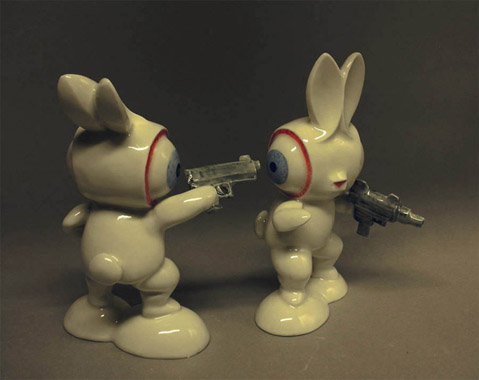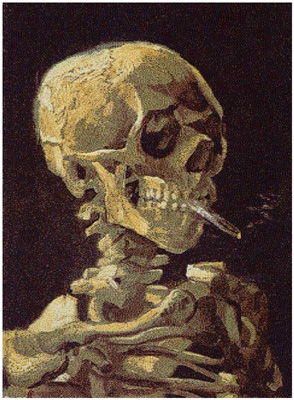During the final week of Art class, we had one last but not least presenter to help us understand contemporary media. Brian Gillis, a contemporary artist who works with multiples, began his lecture by asking us “what is a multiple?” I wondered about the question because that was around the time when I strolled into class but he answered his question by reading a article by Linda Albright-Tomb; a 3- dimensional object that is intended to exist not as a unique work of art, but as a special edition original. That was a very cool way of looking at it. Makes you wonder what kind of artist would purposely create something that is not meant to be unique. One artist that Brian showed the class that stood out to me was Marcel Duchamp his whole work revolved around ready-mades. Marcel Duchamp had a saying where he said, “one is unique, two is a pair, and three is many, to make three is to mass-produce.” Mr. Duchamp is known as the creator of the Bicycle Wheel, the Bottle Rack, and the Fountain; all of which are simple but unique, and slight controversial pieces of art. Duchamp based his work on the idea being more important than the actual base of the art, which why I found it to be way controversial to be able to sign a mere normal urinal. Brian continued with his definitions of a multiple which there were many; he even included the Webster’s definition of what is a multiple. I was a little confused by the frequent questions of “what is a multiple?’
Gabriel Orozco is an artist where curiosity always gets the best in him. He once went into a super market and rearranged a bunch of objects. A little weird and many people can misinterpret that for being a jokester but he was able to take multiples such as food items and cat food and place them in weird odd spots like on top of watermelons. This might not have been intended to exist as art, but to many; it does. One piece that he created was the ping pond table that really intrigued me. This piece of artwork really gave you the urge to want to play and interact with it. I like how Gabriel took something that was mass-produced and made it unique enough to exist as art. Last but not least was Justin Novak; he created the 21st century bunny. A small foot tall ceramic bunny with well placed designs on it. The bunnies are created so delicately that the cracks in the design almost create tension, like you’re afraid of breaking such an interesting work of art. By mass-producing these objects he turned them into multiples, just like Brian described, multiple bunnies exist and there are more than one of them. All the artist this week have all had curiosity and how Brian was saying what brings them all together is the fact that they can take an object and make it unique enough to be able to make it art. Brian said that the presentation was mostly a repetition of “what is a Multiple?” as a strategy to better understand the meaning of a multiple.













